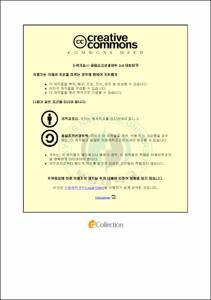준설토 재활용을 위한 고화준설토의 역학적 특성에 따른 식생발아
- Abstract
- As various ocean and port construction businesses were progressed, generation of dredged soil and cost of disposal are increased or maintained consistently.
And it was treated by disposal or landfill because of economical and environmental problems. Disposal or landfill of dredged soil have bad effects on coastal environment, fishery, mud flat, etc. If dredged soil is contaminated, secondary contamination will be generated by heavy metal leaching, too. Therefore, active recycling of dredged soil is needed and for regulations of ocean environment such as London Dumping Convention(1972) and Kyoto protocol(1996).
Meanwhile, generation of industrial waste are also increased continuously. Industrial waste is occupied more than 50% of total waste and treatment is one of the most serious problem of economic and environment. It is almost recycled to cement industry but cement industries also have many problems environmentally because of mining limestone and CO2 emission.
In this study, vegetation mixing soil which is able to use in waterfront was produced to recycle dredged soil and industrial waste economically and eco-friendly. At first, binder made by industrial by-product was experimented to check applicability. Experiment conducted is unconfined compression test in order to know about mechanical characteristic.
An then, Leaching test, pH measure, vegetation germination test were conducted to recycle dredged soil eco-friendly. It was compared with germination to various factor which have effect on vegetation germination and analyzed. Trough these, pH and unconfined strength were suggested to make mixed dredged soil which is able to vegetation germination.
- Issued Date
- 2014
- Awarded Date
- 2014. 2
- Type
- Dissertation
- Publisher
- 부경대학교
- Affiliation
- 대학원
- Department
- 대학원 해양공학과
- Advisor
- 김윤태
- Table Of Contents
- 1. 서론 1
1.1 연구배경 및 목적 1
1.2 연구내용 및 구성 4
2. 이론적 배경 4
2.1 준설토의 발생 및 재활용 5
2.1.1 준설토의 발생 및 처리현황 5
2.1.2 준설토의 재활용 방안 8
2.2 산업부산물의 발생 및 재활용 12
2.2.1 산업부산물의 발생 및 처리현황 12
2.2.2 산업부산물의 재활용 방안 16
2.3 염생식물 19
2.3.1 염생식물의 정의와 분류 19
2.3.2 염생식물의 기능 22
3. 시험재료 및 방법 23
3.1 재료 특성 23
3.1.1 준설토 23
3.1.2 고화제 24
3.1.3 퉁퉁마디 26
3.2 공시체 제작 및 배합조건 27
3.2.1 일축압축강도시험 27
3.2.2 식생 발아 실험 28
3.3 시험방법 30
3.2.1 일축압축강도시험 30
3.2.2 유동성시험 31
3.2.2 pH 측정 32
3.2.3 용출시험 33
3.2.4 식생 발아 실험 35
4. 실험결과 및 비교 분석 36
4.1 역학적 특성 36
4.1.1 응력-변형 거동 특성 36
4.1.2 압축강도 특성 39
4.1.3 단위중량 변화 특성 44
4.1.4 함수비 변화 특성 45
4.1.5 흐름값(flow value) 특성 47
4.1.6 pH 특성 48
4.1.7 용출 특성 49
4.2 식생 특성 54
4.2.1 식생 발아 특성 54
4.2.2 pH 특성 60
4.2.3 준설혼합토의 강도 특성 63
5. 결론 및 향후 연구방향 66
참고문헌 71
- Degree
- Master
- Files in This Item:
-
-
Download
 준설토 재활용을 위한 고화준설토의 역학적 특성에 따른 식생발아.pdf
기타 데이터 / 5.95 MB / Adobe PDF
준설토 재활용을 위한 고화준설토의 역학적 특성에 따른 식생발아.pdf
기타 데이터 / 5.95 MB / Adobe PDF
-
Items in Repository are protected by copyright, with all rights reserved, unless otherwise indicated.